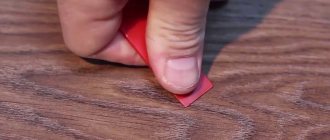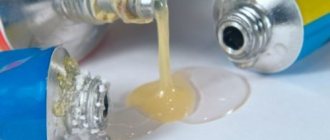There are so many things summer residents have to fight for the quality of their harvest! But no matter what measures are taken, there is someone nearby who just dreams of nibbling carrots or potatoes in the pantry, ruining the flowers in the flowerbed, or doing some other damage. In general, mice do not sleep.
Trying to fight these rodents, summer residents use any means - using strategic thinking, setting up different types of mousetraps and generously scattering poison in the corners.
To some, these methods of getting rid of the mouse “army” will seem inhumane. In addition, pets or children can be harmed by mousetraps and toxic substances. And this should not be allowed under any circumstances. Therefore, you can try a relatively peaceful way to drive mice away from your area - with the help of plants. Some types of plants can be used to prepare poisoned bait, and some can scare away uninvited tailed lovers of other people's crops with their smell or the presence of thorns.
And what kind of plants are these?
Daffodils
More precisely, not the flowers themselves, but their dug up bulbs. To protect plantings of root crops (potatoes, carrots) from mice, in the summer they dig up daffodil bulbs and distribute them over the entire area of the beds, mixed with coriander stems, and then cover them with mulch.
Daffodils are able to protect against mice and their bulbous “colleagues in the flowerbed” - tulips. Mice are always ready to taste their bulbs. To protect these flowers, daffodil bulbs of low-growing species are planted around the tulip bed in the fall.
Elder
Herbs against rodents A well-known folk remedy is elderberry for mice. People have known about the unique properties of the bush for a long time. Elderberry has repellent and mild insecticidal properties. Rodents cannot stand the unpleasant odor emanating from the branches and the hydrocyanic acid that elderberry roots secrete, and therefore avoid the tree.
On a note!
According to experienced gardeners, harmful insects do not settle near elderberries. Therefore, in order to clean the room from pests, it is necessary to place elderberry branches in the house.
Plant baits
If mice do not want to leave your area in an amicable way, it is time to move on to a more severe means of control - baits.
The plants from which baits are made are very poisonous. Don't forget about safety precautions.
Here are some bait recipes:
- grind crow's eye rhizome (5 g) and sunflower seeds (100 g);
- prepare powder from tubers of aconite antidote (50 g) and mix it with 1 kg of cereal or flour;
- prepare an infusion of Lobel's hellebore rhizomes. This remedy for getting rid of mice is prepared as follows: 100 g of rhizomes are kept in 200 ml of water for 4-5 days, adding a little hydrochloric acid to the decoction. Then grain is poured into the finished infusion and waited until it swells;
- Grind the castor bean seeds and mix them with unrefined vegetable oil.
Baits are placed in places accessible to mice. Rodents will happily eat foods diluted with poison (flour, cereal, sunflower seeds, grain), and after such a treat you are unlikely to see uninvited tailed guests on your site.
All means are good in the fight against mice. However, many summer residents want to solve this problem in a civilized way. For example, drive away mice with plants.
Do you have your own proven means of combating these rodents? Share in the comments!
What smells are mice afraid of?
A rodent that comes into a house (or other premises) from the street is very dangerous for people and pets. We talk about popular folk remedies that will help get rid of unwanted guests. The animal’s sense of smell reacts very sharply to various odors, which helps to get rid of it for a long time in the shortest possible time.
Plants
Strong odors repel mice not only in the house, but also in any residential or non-residential premises. For this purpose, it is recommended to use ordinary forest or field plants.
Sagebrush
Wormwood is an herb that has a characteristic pungent, spicy odor that some people describe as bitter or acrid. Its taste and smell make it an excellent method of natural pest control (insects, rodents). The main toxin causing anxiety in wormwood is thujone, the same compound that supposedly turns absinthe into a hallucinogen. Looking at the facts, thujone does not have hallucinogenic properties, but in large quantities it can cause damage to the nervous system, leading to seizures, loss of muscle control and sometimes death.
Tansy
Tansy is a rodent control agent, as well as a herbaceous plant with a characteristic aroma. The shoots are used fresh and dried. They are found in their natural environment - the forest. It is medium in length and produces bright yellow flowers when ripe. Can be found in natural environments throughout almost the entire northern hemisphere.
Elder
Elderberry is a fruit-bearing, deciduous shrub. Most often found in the northern hemisphere. The elderberry bush typically grows up to three meters and displays yellow and white flowers in early summer, followed by dark blue or black berries. They ripen around September. The berries are edible when ripe and also have medicinal properties. Mice don't like their smell. They are able to catch it both in the house and on the street.
Blackroot
Often used for industrial purposes to produce substances that are used to kill harmful insects, fungi, and other pests. The plant has a very pungent, strong odor. It grows to medium length and has bright red-burgundy flowers. It can be found in its natural environment in Russia, Asia, and the Caucasus.
Ledum
A house, apartment and any other room can be protected from rats and mice when using this plant in fresh or dry form. The leaves and shoots of these plants are used as a spice, medicine and insect repellent. These bushes grow up to a meter high. All its parts contain poison that affects the central nervous system. A simple light aroma can cause a headache. In Scandinavia, as well as other northern countries, it is customary to put wild rosemary in the closet. Since parasites, insects, and rodents breed in such places, it is recommended to use small parts of shoots with leaves.
Chamomile
Chamomile is a medicinal plant for humans. Both the mouse and the rat do not like the scent of chamomile. It is unpleasant for rodents due to its specific aroma. This is a very affordable way to get rid of them. Chamomile is recommended to be collected in summer.
Important! The plant can also be used in the form of essential oil.
Mint
The pest does not like such a bright aroma. Essential oils are particularly effective. In dried form, it will be needed to smoke out harmful insects and small pests in any room.
Mint gives off a subtle odor that mice hate, even creating an aromatic sensation that humans love. But you need to use it according to the rules.
Interesting! It is better to keep small pots of shoots on the windowsills. This will improve the home environment and will also act as a preventative against pests.
Taming and training
Usually domestic rats are friendly by nature, but if your pet doesn’t want to come into your arms right away, don’t be upset and be patient – very soon he will become tame.
To start, try giving treats by hand. Once the rodent gets used to your smell and understands that you do not pose a threat, he will begin to eat from your hand without fear. Then start stroking the animal a little while feeding. And only then (if there is no negative reaction from the decorative rat) try to pick it up.
When training, also reward your pet rat with treats. This way you can teach him to respond to a nickname (call him and give him a treat, then try to increase the distance) or to stand on his hind legs (hold the treats higher and say the command).
Never scold or hit a rodent!
Breeds of decorative rats
Let's take a look at the main varieties of pet rats to make it easier for you to choose. Decorative rats are divided into:
- By physique
- By wool type
- By color
Division by body type
Dumbo rats. The name was given because of its resemblance to Disney's baby elephant Dumbo, who could fly by waving his huge ears. Dumbo the rat's ears aren't that big, but they stand out. Rounded, sticking out more to the sides than to the top, like the others.
What are you watching? Quite an average size!
Standard. There’s nothing even to add to the name of the breed – a standard rat.
Standard? Sounds like an insult.Tailless. An ordinary house rat, but without a tail.
Classification by coat type
Rex. Pets with beautiful curls.
Rex.
Satin (Satin, Longhair). Thin, soft fur, which, when properly cared for, shimmers in the rays of light.
Satin Dumbo.
Sphinx (hairless). Has a little “vegetation” on the head and back. An excellent choice for those who are allergic to wool.
Sphinx Dumbo. Well, aren't I adorable?
Downy (Fuzz). They are distinguished by short and fine downy fur.
Down jacket.
Types of colors
Nowadays it is difficult to find a color that has not yet been developed by breeders. But there are also those that stand out from the general background.
Blue domestic rat. A very interesting shade of fur that needs to be seen in person (not every screen captures this color correctly).
Husky. The coloring is similar to that of dogs of the same breed.
Decorative white rat. People often look for a white rat with red eyes. The eyes are red because blood vessels are visible through them (in albino rats, not only the fur is discolored, but also the eye pigment).
Natural flavors
Animals that hunt mice will help solve the problem. You can get a cat. The smell alone will scare the pests and they will leave the room.
If this is not possible, it is possible to simulate the presence of a cat. It is appropriate to use used cat litter. They sprinkle it on the corners and entrances to burrows. They also use rags soaked in cat urine.
Faster results can be achieved by imitating snakes and rats. For the former, mice are food, for the latter, they are competitors in the struggle for food sources. A small amount of snake and rat excrement will repel pests. They are placed in the place where the rodents appeared. You can get excrement at any pet store.
Marsh rosemary
Another effective remedy is wild rosemary for mice. It is also effective against various harmful insects: flies, mosquitoes. Rodents will not enter a house in the rooms of which wild rosemary branches with leaves will be laid out
Important!
The smell of a plant characterized by a high content of essential components can provoke negative consequences in the form of malaise and headaches among the inhabitants of the house. Therefore, it is still not worth abusing it.
Sagebrush
Wormwood is no less effective against mice. The protective properties of the herb known to many people lie in the bitter-tart aroma with which it is endowed. Our ancestors also layered sheaves of grain with dried wormwood to protect against mice. Many summer residents still use wormwood today, girding tree trunks in the garden with it for the winter, since mice can gnaw the bark of apple trees, or lining pantries with food supplies with small bunches of grass.
Healthy recipes
| The smell of burnt rubber | Pieces of rubber are placed in an old metal bucket. Douse with gasoline or lighter fluid. Leave it to burn for a little while, extinguish the burnt rubber and place it in the room. |
| Naphthalene | Naphthalene is the most toxic substance for rodents. In tablets, it is brought to a powdery state. Mixed with sawdust. They put them in holes. |
| Turpentine and kerosene | The pungent smell of turpentine or kerosene forces the animals to leave their holes. The baseboards are moistened with these compounds. In non-residential premises, containers are placed near mouse shelters. The same manipulations are done in the attic and basement. |
| Burnt fluff | An interesting fact is that rodents are afraid of their own burnt skin. It can be replaced with any natural wool or down (preferably duck). A sufficient amount of ash will require a large amount of material. Ashes and starch are mixed. The mixture, in the form of a fine powder, is sprinkled into the gnawed holes. |
| Peppermint | Add 20 drops of peppermint to 50 ml of vegetable oil. Store for up to 6 months, use if necessary. 10 ml of alcohol is mixed with 15 drops of mint and 400 ml of water. Spray the product in pantries and on baseboards. |
| Wormwood and mint | the bitterness of the grass smoldering during fumigation will instantly repel mice; it is possible to hang it or lay it out in different parts of the rooms. |
Is ultrasound effective?
Specialized stores offer ultrasonic devices that, according to manufacturers, repel rodents. Indeed, rats and mice perceive ultrasound, and certain frequencies cause anxiety and even panic in them. This option is considered by many to be the most acceptable, but to ensure results, several factors must be taken into account:
- purchase high-quality and powerful devices, avoid useless counterfeits;
- the device must distribute sound evenly in all directions;
- It is desirable that the ultrasound frequency changes automatically, so it will be more difficult for rodents to get used to it.
You should also remember the disadvantages.
- Firstly, despite the fact that people do not hear high-frequency sounds, prolonged exposure to radiation can cause deterioration of health and headaches for some.
- Secondly, ultrasound is heard by hamsters, dogs and cats, so the device can both scare away rats and cause discomfort to pets.
Behavior of rodents when the ultrasonic device is turned on
Experiments show that when the device is turned on, mice immediately tend to leave the room in panic. During the experiments, they rushed around the cage, threw food and water, and hid in far corners. In life, rodents may try to hide in places protected from sound, but they often run away.
A mouse infestation is an unpleasant and dangerous situation, and it is important to act quickly. Humane repelling of rodents involves using ultrasound or a strong odor that mice are afraid of. You can use dry and fresh herbs, essential oils and spices, and plant certain plants on the site.
Prevention of mouse infestations
If you have gotten rid of rodents, there is no need to relax. They may visit your home again. Therefore, try to follow a number of simple rules:
- Store products in refrigerators or closed containers out of reach of mice.
- The apartment must be in immaculately clean condition.
- If the house (apartment) is old, then seal all the holes and openings so that “not a single mouse gets through.”
- Place wormwood, mint, or cotton balls soaked in essential oil in the corners.
- Get a mustachioed hunter cat.
Important: If you notice the smell or traces of mice, do not hesitate. You need to take action right away, since the females are very fertile and getting rid of a large mouse family will subsequently be much more difficult.
Sometimes mice cause us sympathy, because they are so cute and fluffy, they have funny habits. There are hobbyists who keep pet mice. But remember that they carry dangerous diseases such as tularemia, leptospirosis, salmonellosis and others. In addition, they need to constantly grind down their incisors, so mice chew on everything: furniture, wires, walls, floors. Their appearance in the house is associated with a lot of troubles. And the methods you just read about will allow you to get rid of “uninvited guests.”
If you find an error or inaccuracy, please select a piece of text and press Ctrl+Enter.
Datura
Recent Entries
Lilac perennials that are beautiful, compact and do not crowd out other plants Why when buying seedlings you should not take the sellers’ word for it and how to determine the age of the plant using 3 signs Tomato seedlings have turned purple or whitish: why the color has changed and how to save the plants
Datura is a perennial herbaceous plant of the nightshade family, in the form of a shrub. Datura contains tropane, scopalamine, atropine, hyoscyamine - alkaloids that make it poisonous. A large number of toxic substances are contained in seeds and flowers. Grain soaked in a decoction of above-ground parts of the plant is used as bait.











